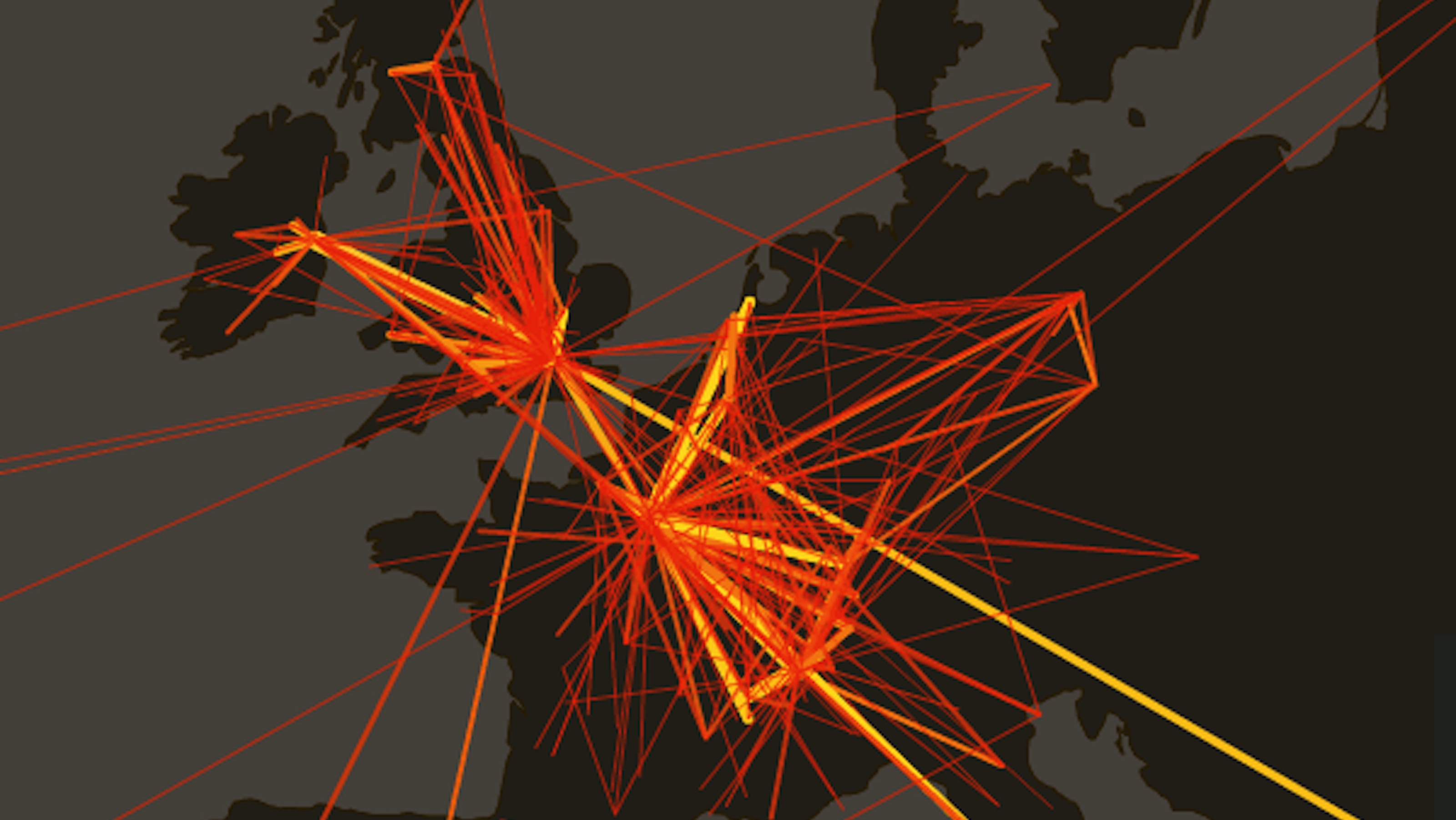The New Way to Work: Top 5 Trends to Watch in 2010

Here are the five trends that I feel are creating The New Way To Work and what they mean to me:
(1) Organizations will embrace Design Thinking. In 2009, Tim Brown, the CEO of IDEO (arguably one of the most important design consultancies in the world), published Change By Design, which suggested that organizations must go even further in their
embrace of right-brain, creative thinking. Design must become more than an
aesthetic — it must become an integral part of the overall process of how
companies think about products, services and customers. By extension, “design
thinking” must now become part of any worker’s toolkit.
As Daniel Pink first suggested five years ago in his bestselling A Whole New Mind, right-brain thinking — in the form of creativity, innovation and big picture contextual thinking — is an increasingly important way for workers to demonstrate their value to their employers. Design thinking is, if anything, a stronger form of creativity and innovation that is focused around achieving specific business goals and objectives. As a result, design thinking will continue to play a key role in any organization’s business strategy as it attempts to differentiate itself vis-a-vis competitors. The most obvious examples are companies like Apple and Target, which have made breathtakingly-beautiful design part of their core value proposition.
(2) Women will play a more important role in re-defining traditional notions of work. In 2009, Maria Shriver and the Center for American Progress published The Shriver Report, which attempted to catalogue the many ways that women are changing the U.S. workplace. In 2009, for the first time ever, women now account for more than 50% of all jobs in America. At the same time, women account for 57% of all bachelor’s degrees and 60% of all master’s degrees, making them the most important part in any company’s talent pipeline. Quite simply, with women now a majority in the U.S. workforce, organizations will need to reassess how well they are responding to the needs of women in the workplace. This ranges from new thinking about customized careers and flexible work arrangements to fundamentally important notions of how to encourage managerial traits such as empathy and compassion.
The most successful organizations will be companies like Pepsi, which has made the recruiting, retaining and promoting of women a company-wide priority. At Pepsi, not only is the CEO a woman (Indra Nooyi), but nearly one-third of all executives are women. There’s an economic payoff, too, from ensuring that women are members of your Board of Directors and members of your senior management team. Business school researchers at Pepperdine and Maryland have found that companies with women in these roles actually out-perform their rivals.
(3) Small business owners will become the new stars of economic growth. The “credit crunch” of the past 12 months, in which financial institutions systematically withdrew liquidity from the banking system in the hopes of stemming the tides of bad loans and foreclosures, appears to be coming to an end. As liquidity slowly makes its way back into the banking system, the first beneficiaries will be small business owners — some of whom had their access to funding turned off seemingly overnight. In recognition of this fact, the Obama Administration has made small business the linchpin of many of its economic policies. At the same time, companies like Goldman Sachs — which recently created a $500 million fund to foster and launch 10,000 small businesses — and American Express – through its OPEN Forum for small business owners — are jumping into the fray, in the hopes of galvanizing economic activity at the grassroots.
Small business owners have often been overshadowed as the traditional media focuses on the empire builders (yes, Donald Trump, that’s you) and the titans of industry rather than unheralded small business owners. Heading into 2010, though, this trend appears to be reversing. Monocle, for example, published a Small Business Guide for 2010 that is chock-full of examples of how resilient small business owners around the globe are re-inventing their industries. From equity research companies in Stockholm to interior design firms in Tokyo to graphic designers in Munich, these small businesses are inspiring examples of how creative, nimble and risk-taking ventures can bring real economic change to any industry. The women and men who dare to dream big now will be the first to reap the rewards once economic growth returns.
(4) “Happiness” will become a way to measure economic prosperity. In September, Nicolas Sarkozy, the (often controversial) president of France, announced that his country was seriously considering a “happiness index” that would transform factors like “quality of life” and “vacation time” into a broader measure of overall economic well-being. In short, the traditional way to measure national economic activity – Gross National Product (GNP) – would be supplanted by something called Gross National Happiness (GNH). This, of course, is a fundamentally new way to think about work that surely has economists scrambling to find a way to quantify something so unquantifiable as “happiness.” Other than France, only the tiny Himalayan nation of Bhutan has had the pluck and audacity to adopt the concept of Gross National Happiness. In 1972, Bhutan adopted GNH as a way to symbolize its dedication to spiritualist, Buddhist ideals rather than purely materialistic, Capitalistic ideals.
In many ways, this thinking about “happiness” is part of an overall paradigm shift in the world of economics that takes us further away from the purely “rational thinking” paradigm. Behavioral economists, led by Princeton’s Daniel Kahneman (who won the Nobel Prize in Economics in 2002), Yale’s Robert Shiller (who famously coined the term “irrational exuberance”) and Harvard’s Daniel Gilbert (who is typically credited as the founder of the “science of happiness”), are helping us understand that purely rational considerations are not all that matter when it comes to making decisions. (Shiller, in fact, specifically asked prominent New Yorker cartoonist Edward Koren to illustrate the book cover of Animal Spirits with his irrational wild things). Within the Obama Administration, ideas from the emergent field of behavioral economics are informing everything from solving for health insurance plans to helping workers save more in their 401(k) plans.
(5) Personal branding will become the buzzword of talented workers around the world. 2009 was the year that Gary Vaynerchuk and Dan Schawbel burst onto the scene with ideas about ways to use the leverage the Web for personal branding. Using everything from blogs to YouTube to Twitter, it’s now possible for everyday people to create a personal brand online — and then use it to launch new businesses based around their personal passions. Gary Vaynerchuk (known to his adoring fans as simply “Gary Vee”) showed what’s possible when you combine a passion for wine, a deep knowledge of social media, and a YouTube-ready personality. He turned a small family wine business into a national industry leader, becoming a national celebrity in the process.
Gary Vee has tapped into the current economic zeitgeist. Idealistic notions about lifetime employment with a single company are long gone. The only real job security is to create your own personal brand. With U.S. unemployment pushing above 10% in November, starting a new venture has become a very attractive option to millions of workers. Take the self-employment route and do what you love. Do it well, and you might just Crush It.
This last trend is perhaps the most important of all five mentioned above. The Internet as a distribution channel for a personal brand is unmatched. For freelance workers, the Internet has made it possible to showcase their best work to anyone in the world, at any time. Take photography, for example. Using the photo-sharing service Flickr, professional photographers have had a way to showcase and highlight their work. Starting in mid-2008, Flickr made it possible for anyone to buy royalty-free and rights-managed photos through a unique partnership with Getty Images. If your photography skills and talent are strong enough, you no longer need to give them away for free (the photo accompanying this blog entry was actually purchased via the Flickr collection of Getty Images).
Heading into 2010, I’m looking forward to watching how these five macro trends about The New Way To Work continue to evolve. Sometime in the future, no doubt, today’s world of work will look as wonderfully anachronistic as the world of Matthew Weiner’s Mad Men appears to us now.
[photo credit: People at Work by BestPics/Flickr Collection/Getty Images]
NOTE: This blog entry is an official submission to the Elance “New Way to Work” competition. Email contact information: basulto [at] gmail.com.




